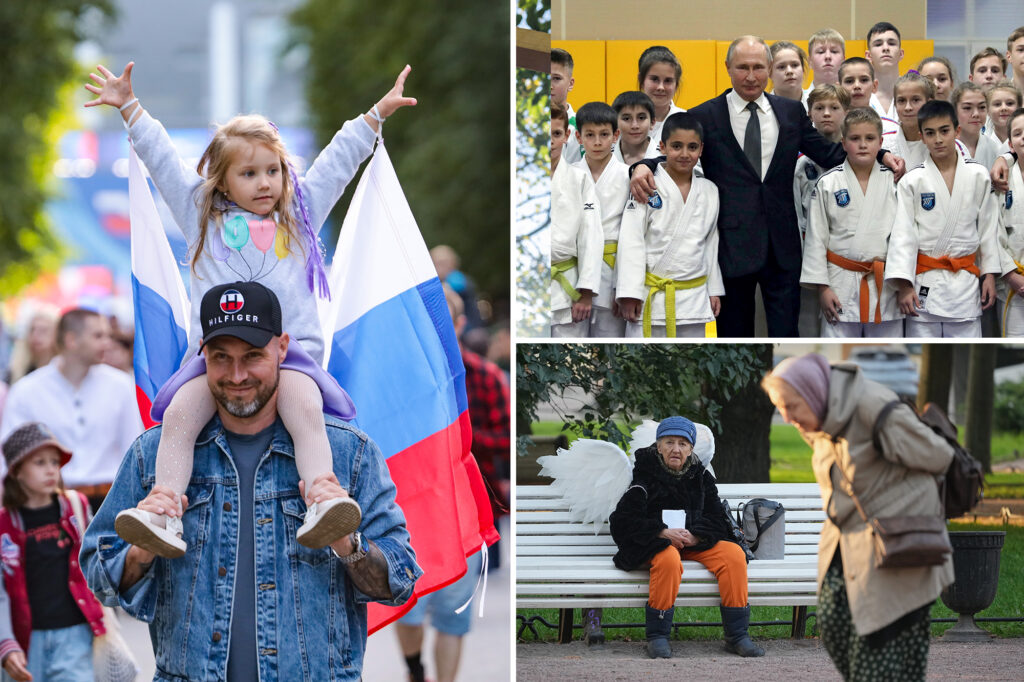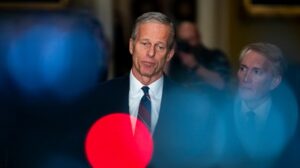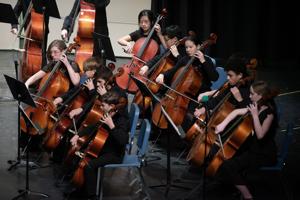
Russia is grappling with a significant demographic challenge that has raised alarms regarding national security. Over the past 25 years, President Vladimir Putin has acknowledged the threats posed by a shrinking and aging population. Since the late 1990s, the birth rate has fluctuated dramatically, but a concerning trend has emerged: the number of births has consistently declined in recent years, exacerbated by economic instability and the ongoing war in Ukraine.
In 1999, a year before Putin assumed the presidency, Russia recorded its lowest number of births to date. By 2005, he emphasized the need for “social and economic stability” to address demographic issues. Despite various initiatives aimed at encouraging higher birth rates, such as free school meals for large families and awards for mothers with multiple children, the situation has not improved. In a recent address at a Kremlin demographic conference, Putin reiterated that increasing births is “crucial” for the country’s future.
Economic factors have played a pivotal role in this demographic decline. Following a period of economic growth, the number of births increased from 1.21 million in 1999 to 1.94 million in 2015. However, the situation has deteriorated significantly, with only 1.22 million live births recorded last year, nearly matching the lows of 1999. Current estimates indicate that Russia’s population has decreased from 147.6 million in 1990 to 146.1 million today, according to the Federal Statistics Service.
Impact of an Aging Population
The demographic landscape is becoming increasingly concerning as the population ages. In 1990, 21.1% of the population was aged 55 or older; by 2024, that figure is projected to rise to 30%. The decline in the number of young women of childbearing age further complicates the nation’s efforts to reverse these trends.
Demographer Alexei Raksha highlighted that the number of births in February 2025 was the lowest monthly figure in more than two centuries. The demographic crisis is compounded by the ongoing war in Ukraine, which has led to the loss of young men due to military casualties and emigration. Many young Russians have left the country to escape political repression or military service, further reducing the pool of potential parents.
Government Initiatives and Public Response
In response to the demographic crisis, the Russian government has implemented various family-friendly initiatives. These include financial incentives for parents, such as cash certificates for child-related expenses and one-time payments for pregnant teenagers in some regions. While some of these measures have received support, others have been met with criticism for encouraging early pregnancies.
The government has also taken a hardline approach towards reproductive rights, implementing laws that limit access to abortion and discourage “child-free ideology.” Such measures have prompted a shift in public discourse, making discussions about family planning increasingly sensitive. A private clinic patient noted the stark contrast in treatment between state-run and private facilities, where she avoids invasive questions about her reproductive choices.
Despite these efforts, Russia’s fertility rate remains alarmingly low at 1.4 children per woman, significantly below the replacement rate of 2.1. Experts warn that restricting access to abortion will not lead to an increase in births but may instead result in more dangerous, illegal procedures, as noted by activist Zalina Marshenkulova.
The Kremlin’s stance on immigration has also complicated the demographic picture. Although increasing immigration could help offset population losses, recent government actions have fostered anti-migrant sentiment, making it more difficult for foreign workers to settle in Russia. Many Central Asians, traditionally drawn to Russia for work, are now seeking opportunities elsewhere due to rising discrimination and economic uncertainty.
The ongoing war in Ukraine has further deterred young couples from starting families, with widespread instability undermining confidence in the future. As Jenny Mathers from the University of Aberystwyth observed, “An open-ended major war doesn’t really encourage people to think positively about the future.”
In summary, Russia’s demographic issues pose significant challenges not only to its social fabric but also to its national security. As the government grapples with declining birth rates and an aging population, the effectiveness of its initiatives remains to be seen. The interplay of economic conditions, social policies, and public sentiment will ultimately shape the future of Russia’s population.






